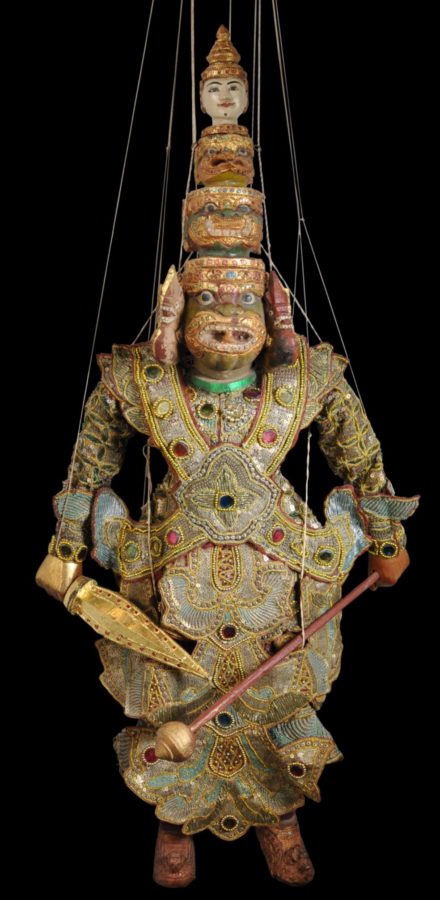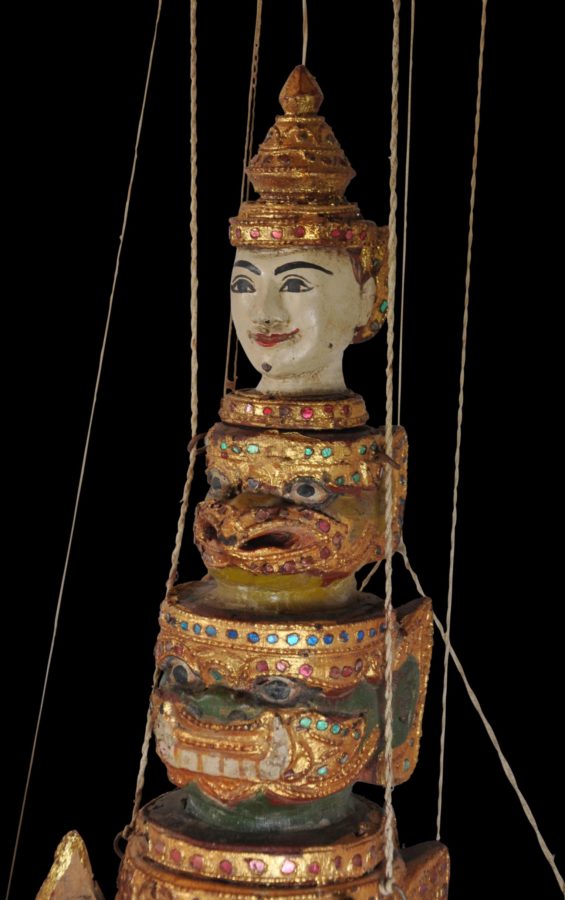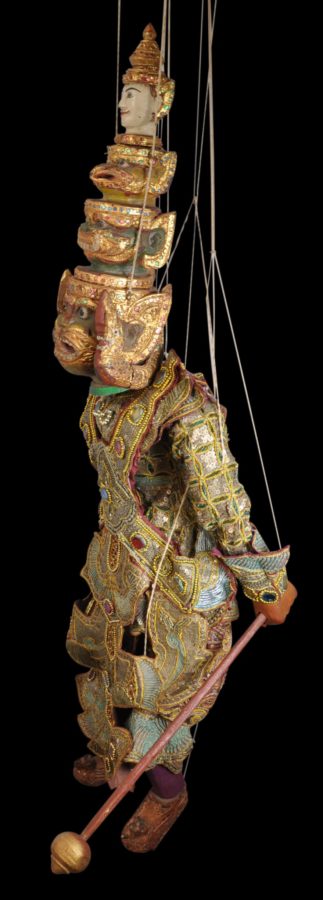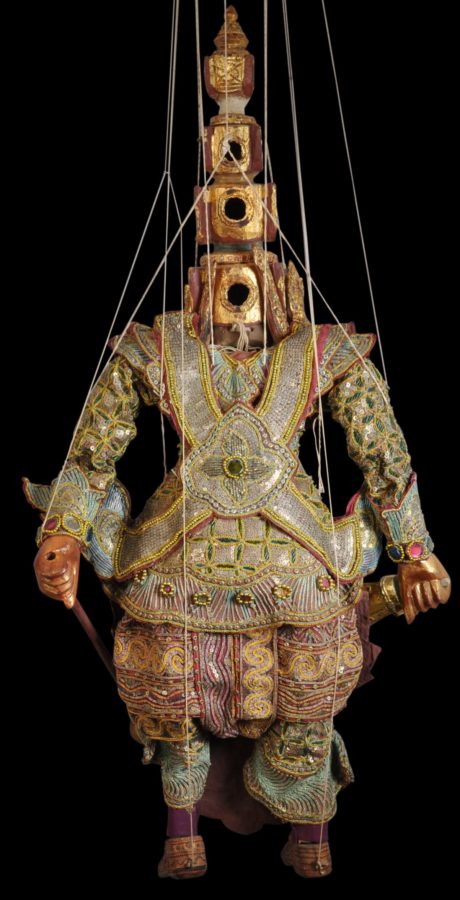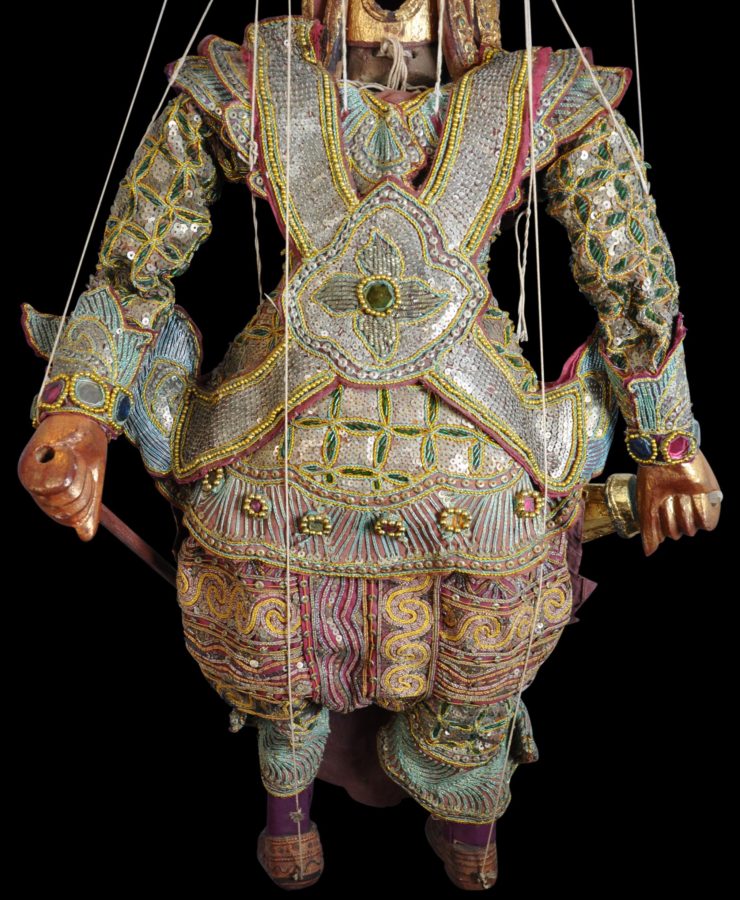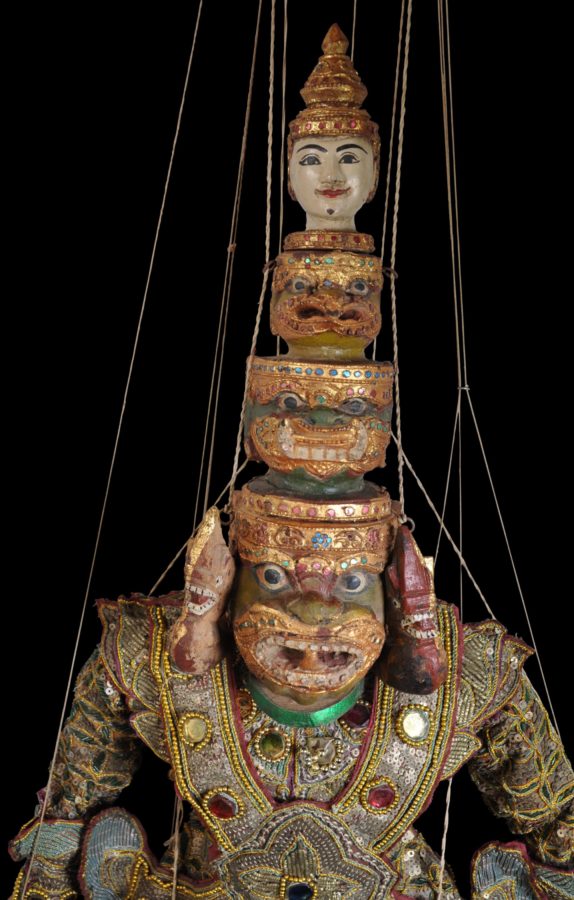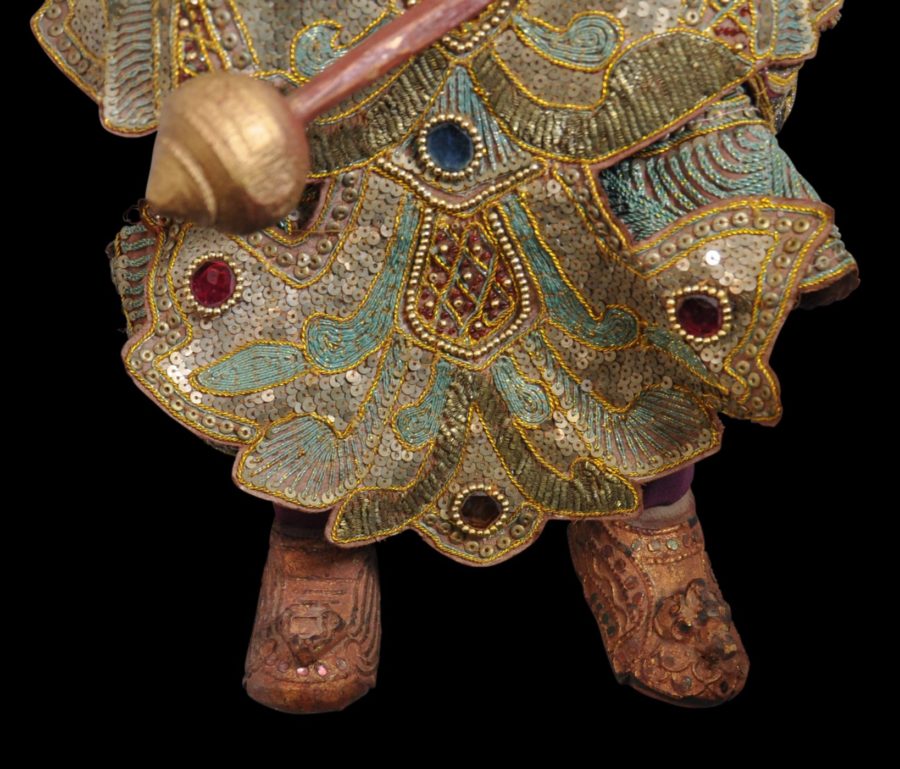This is one of the most complex and finely made Burmese marionette puppets that we have seen. It is unusually large at almost a metre in height (plus strings and wooden string holder or dalet), and has excellent provenance having come from one of the world’s most important private puppet collections. The quality of the puppet’s garments is exceptional, as is its condition.
The puppet is made of carved and painted wood and cloth. It retains its original strings (kyo). Its costume is richly decorated with sequins, ample couched metallic thread, pearl-like brass applied buttons, and large and thick red, silver and green foil backed glass roundels.
The puppet has multiple heads and carries a sword and a club or a wand in either hand. His dress is richly adorned and with multiple layers and is based on 19th century court costume.
The character is inspired by the Indian epic, The Ramayana, the Burmese version of which is known as Yama Zatdaw (ရာမဇာတ်တော်), and is is based on Ravana, the ruler of the demons and the opponent of the hero Rama (in Burmese: Yama or ရာမ). In Burma, the character is known as Yawana (ရာဝဏ) or Datha-giri (ဒဿဂီရိ). (In nearby Thailand, Ravana is known as Totsakan.)
Burmese puppet makers were responsible for the making of stringed marionettes (yok-thei) for theatrical performances known as yok-thei-pwe. Such performances were very popular in Burma in the 19th and early 20th centuries an were intended for adults. The performances drew upon the Jataka stories, Burmese history, fables and legends (Fraser-Lu, 1994, p. 98).
Plays were typically performed on a bamboo stage that was generally devoid of props, and they were accompanied by a Burmese orchestra. The precise number of puppets used varied from troupe to troupe but typically a set of marionettes included a king, four ministers, prince and princesses, a tiger, an elephant, a horse, an old woman, a hermit, and so on.
According to Fraser-Lu (1994, p. 98), an edict passed during the reign of King Ba-gyi-daw (1819-37) decreed that human, horse and nat puppets should be made of yamane wood (gmeline aborea) and that the other puppets should be carved from than-that wood (albizzia lucida).
The puppet is from the collection of the late John Blundall. Blundall was a world-renown puppeteer himself. He was part of the company that founded the television program the Thunderbirds. In 1968 he founded the Cannon Hill Puppet Theatre company, housed within the Midland Arts Centre in Birmingham, and, until 1992, was its artistic director, writing, designing and directing more than 50 productions. Blundall’s connections to the world of professional puppetry allowed him to amass a world-important collection of puppets.
References
Fraser-Lu, S., Burmese Crafts: Past and Present, Oxford University Press, 1994.
Singer, N., Burmese Puppets, Oxford University Press, 1992.
Wasilewska, J., Asia /Pacific / Solec 24, The Asia and Pacific Museum (Muzeum Azji Pacifikyu a Warszawie), 2017.


